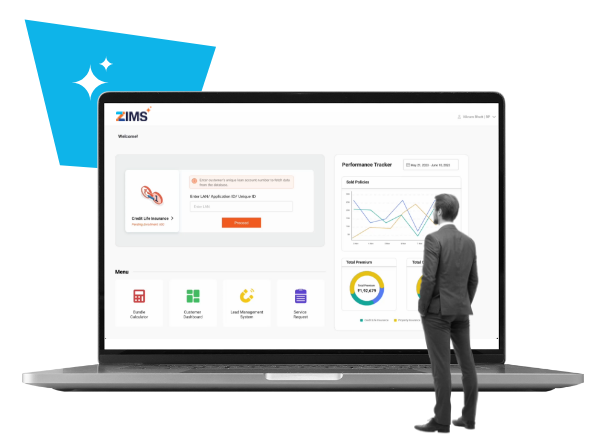
The global insurance industry is undergoing a radical transformation, with digital disruption at its core. According to a McKinsey report, insurers that invest in digital capabilities achieve 30-40% efficiency gains compared to traditional models (McKinsey Report). As AI in insurance solutions becomes more advanced, leveraging an Insurance API-first approach is no longer optional—it is a strategic imperative.
In an ever-changing marketplace, with customer needs and regulatory demands shifting, insurers have no choice but to embrace an API-first mindset if they’re going to be agile, scalable, and competitive. But what does this do to CEOs and CTOs? This blog post investigates why accepting APIs is crucial to insurers and how AI-based integrations can tap new revenues, improve the customer experience, and optimise operations.
What Is an API-First Approach in Insurance?
An API-first strategy involves designing and implementing Application Programming Interfaces (APIs) as the building blocks of digital transformation before developing applications or user interfaces. In insurance, this implies facilitating effortless integration of core systems, third-party services, and AI-based analytics to produce a more networked and intelligent ecosystem.
By prioritising APIs from the outset, insurers can future-proof their technology stack, ensuring flexibility and scalability in a rapidly changing market.
Why CEOs and CTOs Must Prioritise an API-First Strategy
In an industry driven by digital transformation, adopting an API-first approach is no longer optional—it is a necessity. APIs empower insurers to innovate rapidly, enhance customer experiences, and stay ahead of regulatory changes.
1. Agility and Faster Time-to-Market
Speed is a major differentiator in the modern competitive insurance world. APIs enable insurers to bring new products and services to market quickly by consuming third-party offerings without having to replace legacy systems. This agility is essential in an industry with constantly changing consumer expectations and regulatory environments.
2. Seamless Customer Experience
Consumers today expect personalised, real-time digital interactions. An Insurance API-driven ecosystem enables insurers to integrate AI-powered chatbots, automated underwriting, and hyper-personalised recommendations, ensuring seamless customer interactions.
3. Data-Driven Decision-Making with AI
The insurance sector generates vast amounts of data, and leveraging this effectively is key to gaining a competitive advantage. When AI in insurance solutions combined with an API-first approach, enhances decision-making through real-time data exchange. APIs facilitate predictive analytics, risk assessment, and fraud detection by seamlessly connecting to external data sources such as IoT devices, credit bureaus, and social media platforms.
4. Cost Optimisation and Operational Efficiency
Legacy IT systems are a major cost burden for insurers. By adopting an API-first approach, insurers can transition to cloud-based, microservices-driven architecture, significantly reducing IT overhead and improving scalability.
5. Regulatory Compliance and Security
The insurance industry is subject to heavy regulation, including data privacy legislation like GDPR and compliance requirements specific to the industry. API-first architecture facilitates compliant and secure data exchange, leading to improved governance and risk management.
How to Implement an API-First Strategy in Insurance
Implementing an API-first strategy requires a structured approach to ensure alignment with business goals and technology capabilities. Here are the key steps:
Step 1: Develop a Robust API Strategy
Before diving into API development, insurers must establish a clear strategy. This includes defining API use cases aligned with business goals, setting governance policies, and ensuring compliance with industry security standards.
Step 2: Leverage AI-Driven Insurance APIs
AI-powered APIs can significantly enhance operational efficiency. Insurers should integrate AI for claims automation, fraud detection, and predictive underwriting. Machine learning algorithms can also help personalise customer experiences, driving engagement and retention.
Step 3: Foster a Developer Ecosystem
A thriving developer ecosystem is essential for innovation. Insurers should encourage third-party developers to build innovative solutions using Insurance APIs, providing comprehensive API documentation and sandbox environments to facilitate experimentation.
Step 4: Ensure Seamless Integration
To leverage the full potential of APIs, insurers need to pay attention to easy integration. Employing API gateways and cloud-native architecture provides elasticity while embracing open insurance standards facilitates collaboration with fintech and insurtech partners.
Future Trends: What’s Next for API-First Insurance?
The role of APIs in insurance will continue to evolve, enabling new business models and enhanced customer experiences. Some key trends to watch include –
- Embedded insurance, enabling real-time policy issuance via e-commerce and fintech platforms.
- Decentralised insurance models powered by blockchain APIs.
- Hyper-personalised underwriting, using real-time behavioural and contextual data.
Conclusion: The Competitive Edge of API-First Insurance
For CEOs and CTOs, adopting an API-first approach is not just a technical requirement—it is a strategic differentiator. By enabling agility, innovation, and data-driven decision-making, APIs help insurers stay ahead of competitors in an increasingly digital landscape.
The question is no longer if your organisation should adopt an API-first strategy, but rather how quickly you can implement it to drive sustainable growth and superior customer experiences.





